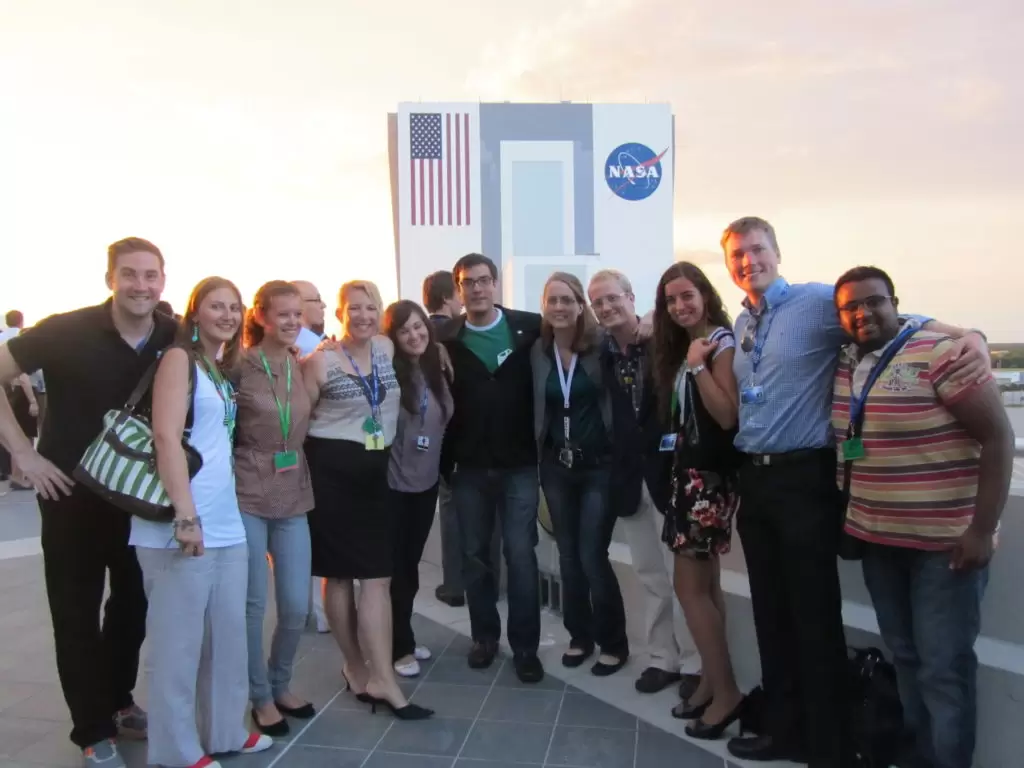After a career at Swinburne University advising researchers and companies on how to get to space, Kim Ellis is heading there herself.
Our professional and personal lives have been changed immensely this year. For Kim Ellis, the country’s first lawyer/scientist-astronaut candidate, there is no exception.
She was selected to train through the NASA-supported Project Possum — with five days training at Embry-Riddle Aeronautical University in Florida scheduled to have happened in April — leading to a qualification to conduct suborbital (up to 100 km) missions “for the NASA 501 astronautics research and education program.”
“There’s a whole suite of academic training that you need to do to understand operations, for the aircraft and spacecraft that are relevant,” she said.
“All of the technical details that go with the equipment and how you conduct flight training in a suborbital vehicle, and what that the flight profile looks like.”
With a lead instructor stranded in Siberia as the borders closed and social distancing making close-proximity instruction unsafe, the astronaut training is on pause.
Ellis said that, despite this disappointment, life hasn’t slowed down due to COVID-19.
For example, at Swinburne University, where Ellis is Senior Lecturer in Space Research & Law, the demand for both online courses and space education has led to a new co-major in space technology, which she is coordinating, and which will begin next year.
“There are three project units the students can take to support that coursework, and they’ll be projects working with US and Australian commercial space companies,” said Ellis, adding that the partners will be announced in August.
Two six-week micro-units introduced at the university in 2019 — Space Applications in the Australian Context, and Space Regulatory Framework — will continue next year.

Know your obligations
Ellis also provides regulatory input into Swinburne’s SHINE (Swinburne Haileybury In Space Experiment) program. This links the university’s academics and students with Haileybury College students, delivering a microgravity research project at the International Space Station. Projects in 2018 and 2019 examined the effect of the environment on magnetorheological fluid and tooth decay respectively.
The expertise of a space lawyer for research and commercial missions is in increasing demand.
For commercial companies with a view to providing launch services in Australia, navigation of the new domestic regulatory framework could provide challenges.
The Space (Launches and Returns) Act 2018 requires that Australian organisations conducting space operations acquire the necessary permits and authorisations to conduct activities both in Australia and overseas. There are serious penalties for those organisations or individuals who fail to obtain appropriate regulatory permits.
Fundamentally, it’s important to identify what your regulatory obligations are from the outset of a project or risk delays, advised Ellis.
“For example, it’s important to submit your application for regulatory approval early and to estimate the costs of managing the approval process in addition to the costs of the applications.’” she explained.
“Sometimes the lead time to getting an approval is so long that by the time they come to that question at the end of developing whatever they’re developing, their project’s going to be delayed because they’ll have to wait for the appropriate authorisations.
“When you’re putting your proposal together it’s really important to address what are your obligations, if any, identify them, and then once you’ve identified them, then work out who’s going to manage it. How are we going to manage it? And of course, there’s costs associated with that as well.”
Microgravity
Ellis said Project Possum (Polar Suborbital Science in the Upper Mesosphere) was an exciting opportunity to pursue suborbital microgravity research. This microgravity environment is induced by parabolic flight.
While Project Possum provides suborbital flight training on aircraft which complete a number of parabolas, the Astronaut-Candidates are being trained for suborbital flight on the next generation of commercial suborbital spaceflight vehicles.
This is more affordable than going all the way to the International Space Station (ISS) to perform experiments or test and qualify space hardware.
When training is complete, Ellis will be a qualified Suborbital Flight crew member, trained and accredited for spaceflight to a level which exceeds the minimum United States Code of Federal Regulations § 460.5(b). This means accreditation to conduct experimental programs in High-G and suborbital environments for equipment testing and qualification, and also to undertake de-risking research earmarked for the ISS, the Lunar Gateway or beyond.
Ellis’s background is as a chemist and as a senior technical officer at BHP in the uranium technology team, before being made redundant when the miner closed the Newcastle site.
Asked by a career consultant what she would do next if she could do anything, Ellis answered rocket scientist, and was advised that law might be a good general option to start the next phase of her professional life.
She is of course eager to complete her training and get back to scientific research. The rescheduled five-day program is now slated for this December.
“They decided to reschedule the flight and space suit training until September, but we just had a monthly meeting and they updated us to say that the flight and space suit training’s being rescheduled for December 7th to the 11th, in Melbourne, Florida,” Ellis said.
“I just can’t wait to get out there.”
Interested in a career in Australia’s dynamic space science industry? To learn more about Swinburne’s Space Technology courses, click here.